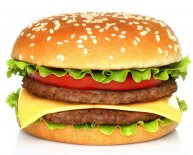
Slogans on healthy eating habits
 Most of us know we should eat more leafy greens, make time for our friends and family, and get off our laptops.
Most of us know we should eat more leafy greens, make time for our friends and family, and get off our laptops.
And most people will even want to get it done.
But often, also our best-laid plans be fallible.
In some way, in regards down seriously to it, we either forget (because we don’t use a cue to tell united states), or we make excuses.
But we don’t need certainly to count on inspiration and willpower to reach our goals; it can be lots easier that that.
Before we understand the reason why, we have to learn just what triggers our behaviours to start with.
Eat Five-A-Day
In 2008, Gráinne Fitzsimons and Jonah Berger conducted a study about how to motivate individuals to eat even more vegetables and fruits. [1]
Pupils had been compensated twenty dollars to report what they ate everyday for breakfast, meal and dinner at their nearby food hallway.
After seven days, the students had been asked to be involved in what appeared like a not related experiment from a new researcher.
These people were informed your nationwide Board for Better Heath wanted feedback on a public-health slogan, focusing on college students.
Approximately half the pupils saw the slogan, “Live the healthy way, eat five veggies and fruits a day”. One other one half saw, “Each and each dining-hall tray needs five fruits and vegetables a day”. This was relevant because students lived on university, and many of those ate in dining halls which used trays.
Merely to be sure, these were shown it over twenty times, printed in various colours and fonts.
Both slogans promoted people to eat fruits and vegetables, nevertheless “tray” motto did so making use of a trigger.
Could Fitzsimons and Berger trigger healthy eating utilizing the living area tray to remind the students of this motto?
Turns out they are able to.
Students who'd seen the more general, “live healthy” slogan performedn’t alter their diet plan. But pupils who had heard of “tray” motto and utilized trays within their cafeterias, changed their behavior.
The trays reminded all of them of motto and thus, they ate 25 % more vegetables and fruit.
The trigger worked.
Top of Notice Awareness
At a minute, some behaviours tend to be more front side of mind, or available, than the others.
In marketing and advertising, top of head understanding (TOMA) is very of good use; a brandname or specific product that has top of head awareness should come front of brain once you think about a particular business.
Exactly the same applied to practices.
Some behaviours tend to be habitually available; if you’re an athlete, you’re continuously considering your next online game. Likewise, if you’re an innovative or a business owner, you’re after that task or business deal will always top of head.
But stimuli inside our surrounding environment may also determine which behaviours are top of head.
Places, smells, and sounds can trigger associated behaviours – like bad eating habits – and also make all of them more top of head.
Causes are just like little environmental reminders for relevant principles and tips. [2]
To be able to break bad practices and form good ones that truly stick we must make bad practices inaccessible and good habits obtainable.
The tutorial right here, as obvious from Fitzsimons and Berger’s study, is obtainable behaviours trigger activity, however they require instructions.
Offer Your Self Instructions
Unlike a kitchen appliance, we don’t incorporate instructions; we figure out how to self-direct our behaviours by learning from your errors, not from abstract information.
Eventually, we don’t need general guidance; we need a proactive approach.
If we are to agree to good practices and provide them top of brain awareness, not only do we have to cause them to obtainable – like leaving dental care floss in basic sight – but we must instruct ourselves how-to do them also.
This is accomplished utilizing environmental cues.
For example:
- Dieting: “Every weekday morning, for breakfast [CUE], i need to consume either scrambled eggs or walnut-yogurt parfait (excluding Saturday, that’s my Cheat time).
- Exercise: “Every Tuesday and Wednesday, whenever I arrive home from work [CUE], i need to collect my fitness center case and go directly to the gym for 30 minutes”.
- Efficiency: “Every night, at 21:00, when my noisy alarms reminds myself [CUE], i have to de-clutter my inbox. Including replying to e-mails and unsubscribing from spam”.
- Self-Improvement: “Every time, once I commute to and from work [CUE], i have to read 10per cent of a non-fiction Kindle guide and highlight what I believe is useful”.
Just like using a Commander’s Intent or an execution objective, you’re self-directing your behavior. You’re defining your intent (“I must”) and causing it utilizing an environmental cue.
Guess what happens you prefer. You know what should be done. Offer yourself a telephone call to action and give your good practices top of mind awareness.
Resources
[1] Berger, J and Fitzsimons, G. (2008) “Dogs regarding Street, Pumas on your own Feet: How Cues in Environment Influence Product Evaluation and Choice”, Journal of Marketing analysis: February 2008, Vol. 45, # 1, pp. 1-14.

















